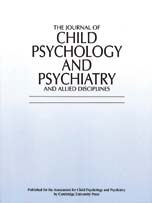Prospective 10-year Follow-up in Adolescent Anorexia Nervosa—Course, Outcome, Psychiatric Comorbidity, and Psychosocial Adaptation
Published online by Cambridge University Press: 12 July 2001
Abstract
The aim of the present study was to follow up the long-term course of adolescent-onset anorexia nervosa by repeated assessment, to analyze the association between the course of the eating disorder and psychiatric comorbidity, and to evaluate psychosocial outcome. The sample consisted of 39 inpatients who were reinvestigated 3, 7, and 10 years after discharge. The patients and 39 controls matched for age, gender, and occupational status were assessed with structured interviews on DSM-III-R eating disorders, additional axis I and axis II psychiatric disorders, and psychosocial functioning. Results showed that 69% of the original subjects met the criteria for full recovery at the 10-year follow-up. One patient (3%) still exhibited the full syndrome of restrictive anorexia nervosa, two patients (5%) the full syndrome of bulimia nervosa. None of the patients had died. Of the subjects, 51% currently had an axis I psychiatric disorder and 23% met the full criteria for a personality disorder. Apart from the eating disorder, anxiety disorders and avoidant-dependent and obsessive-compulsive personality disorders were the most common psychiatric diagnoses. There was a significant association between psychiatric comorbidity and the outcome of the eating disorder and between outcome and psychosocial adaptation. With regard to psychiatric morbidity and psychosocial functioning, long-term recovered patients did not differ significantly from normal controls. It is concluded that in most patients adolescent anorexia nervosa takes a prolonged course, although it seems to be more favorable than in adult-onset forms. Those who achieve complete recovery from the eating disorder have a good chance of overcoming other psychiatric disorders and to adapt to social requirements.
Keywords
- Type
- Research Article
- Information
- The Journal of Child Psychology and Psychiatry and Allied Disciplines , Volume 42 , Issue 5 , July 2001 , pp. 603 - 612
- Copyright
- © 2001 Association for Child Psychology and Psychiatry
- 187
- Cited by


